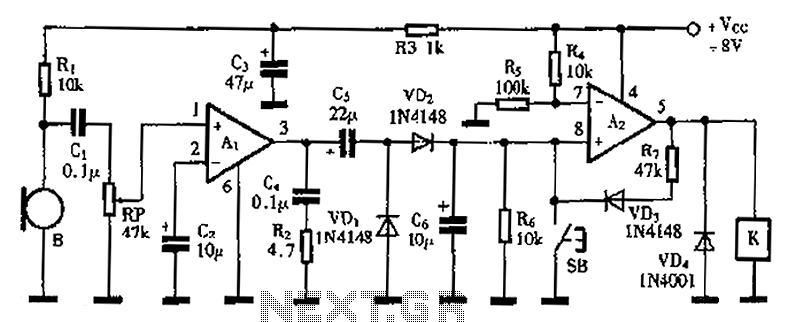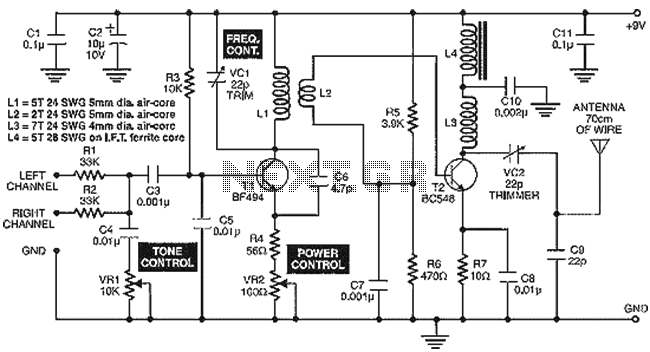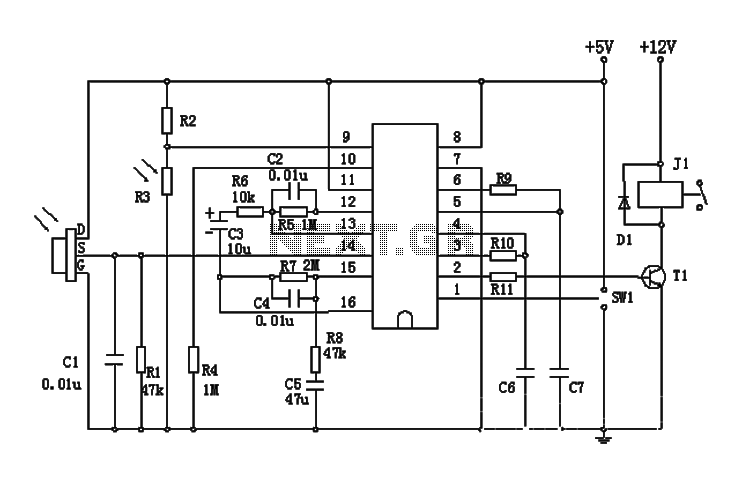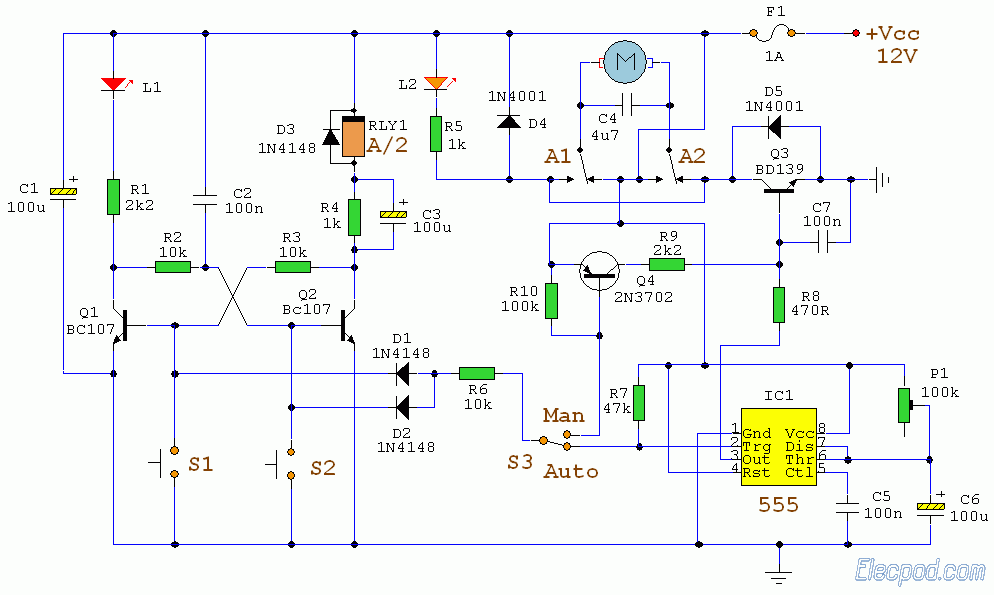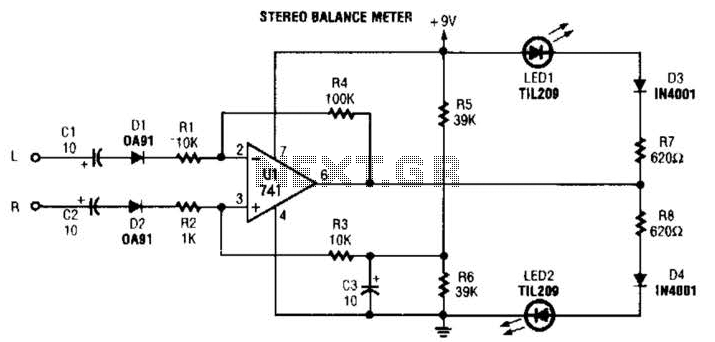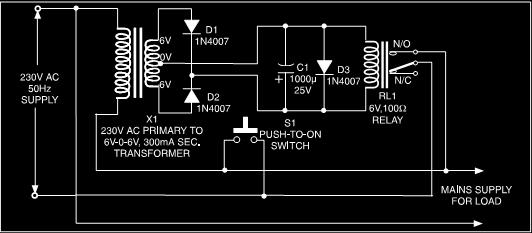
Homemade metal detector circuit
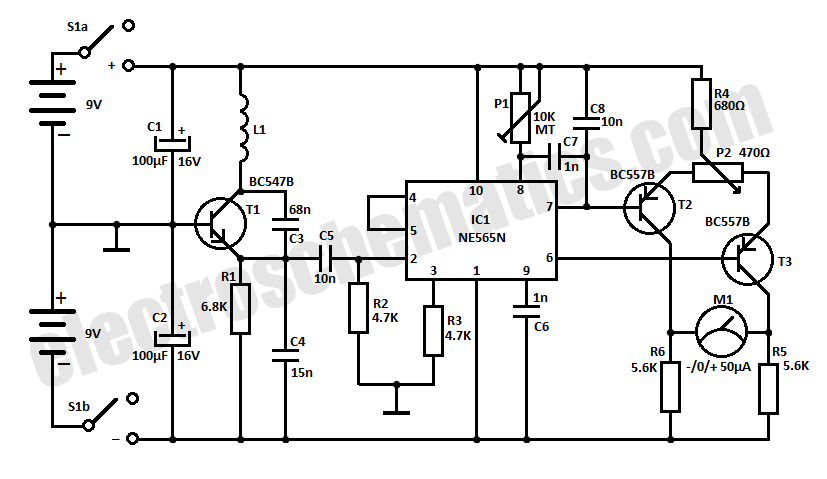
This homemade metal detector circuit will assist in locating objects made of materials with relatively high magnetic permeability. It is not suitable for detecting certain metals.
This metal detector circuit operates on the principle of electromagnetic induction, utilizing a coil of wire to generate an oscillating magnetic field. When a conductive or ferromagnetic object enters this field, it induces a change in the magnetic flux, which can be detected by the circuit.
The core components of the circuit include a transmitter coil, which emits the magnetic field, and a receiver coil, which detects the variations caused by nearby metallic objects. A simple oscillator circuit, often based on a 555 timer IC, can be employed to generate the required frequency for the transmitter. The frequency is typically set in the range of a few kHz to ensure effective detection of various metals.
Additional components may include a potentiometer for tuning the sensitivity of the detector, allowing the user to adjust the circuit for different types of metals or ground conditions. A simple audio output device, such as a piezo buzzer, can provide an audible indication when a metal object is detected.
Power supply considerations are also essential; the circuit can be powered by batteries or a DC power source, depending on the design requirements. Proper grounding and shielding techniques should be implemented to minimize interference from environmental noise, which can affect the performance of the detector.
Overall, this homemade metal detector circuit is a practical project for electronics enthusiasts, providing a hands-on experience in understanding basic principles of electromagnetism and circuit design.This homemade metal detector circuit will help you find objects composed of materials with relatively high magnetic permeability. It is not suitable for bu.. 🔗 External reference
This metal detector circuit operates on the principle of electromagnetic induction, utilizing a coil of wire to generate an oscillating magnetic field. When a conductive or ferromagnetic object enters this field, it induces a change in the magnetic flux, which can be detected by the circuit.
The core components of the circuit include a transmitter coil, which emits the magnetic field, and a receiver coil, which detects the variations caused by nearby metallic objects. A simple oscillator circuit, often based on a 555 timer IC, can be employed to generate the required frequency for the transmitter. The frequency is typically set in the range of a few kHz to ensure effective detection of various metals.
Additional components may include a potentiometer for tuning the sensitivity of the detector, allowing the user to adjust the circuit for different types of metals or ground conditions. A simple audio output device, such as a piezo buzzer, can provide an audible indication when a metal object is detected.
Power supply considerations are also essential; the circuit can be powered by batteries or a DC power source, depending on the design requirements. Proper grounding and shielding techniques should be implemented to minimize interference from environmental noise, which can affect the performance of the detector.
Overall, this homemade metal detector circuit is a practical project for electronics enthusiasts, providing a hands-on experience in understanding basic principles of electromagnetism and circuit design.This homemade metal detector circuit will help you find objects composed of materials with relatively high magnetic permeability. It is not suitable for bu.. 🔗 External reference
